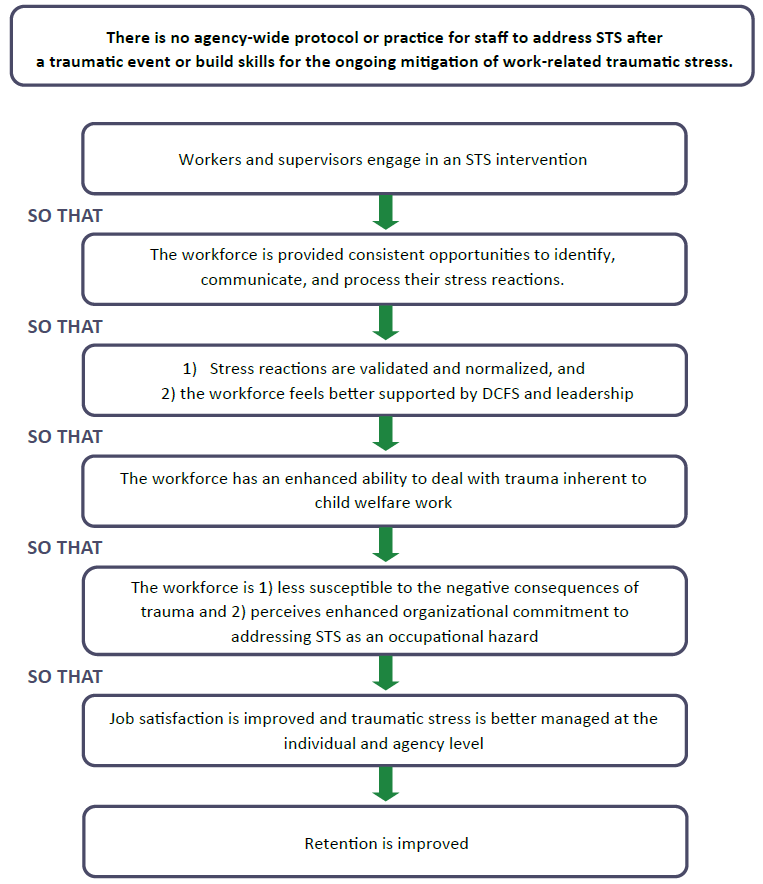Addressing Work-related Traumatic Stress
Several workforce challenges were discussed as opportunities for intervention during the needs assessment process conducted partnership with the Nebraska Department of Children and Family Services’ (DCFS) to address child welfare workforce turnover. Through a series of steps and causal links, a theory of change provides a roadmap to address the root causes of an identified workforce problem and describes how and why changes are expected to lead to the desired outcomes. Ultimately, two theories of change were developed to step through the “if, then” logic:
- building resiliency skills within child welfare workers and supervisors; and
- implementing a debriefing protocol focused on supporting the workforce after a traumatic event.
Together, these theories of change informed the selection of Nebraska’s intervention to address work-related traumatic stress: CFS Strong.
The theory of change development process was informed by Human Resources data, input from the Nebraska Workforce Project implementation team, and relevant research on connections between the identified outcomes. Overall, it was anticipated that by addressing secondary traumatic stress (STS) as an occupational hazard for the child welfare workforce, this would bring forth a series of outcomes, ultimately culminating in improved job satisfaction, enhanced perceptions of organizational support, and an improved ability to manage traumatic stress within the workforce. In turn, these outcomes were anticipated to improve retention.
The following image depicts the theory of change beginning with a problem statement followed by a series of steps that lay out the logic on how that problem will be addressed.
